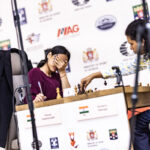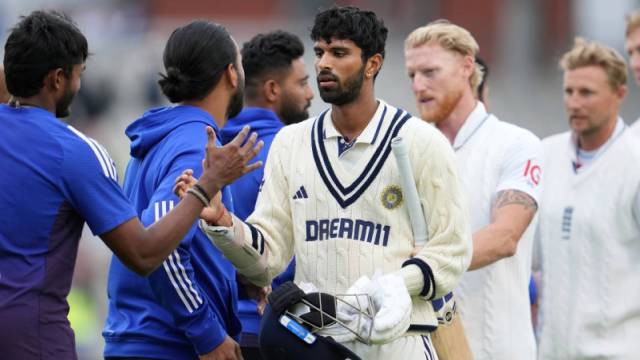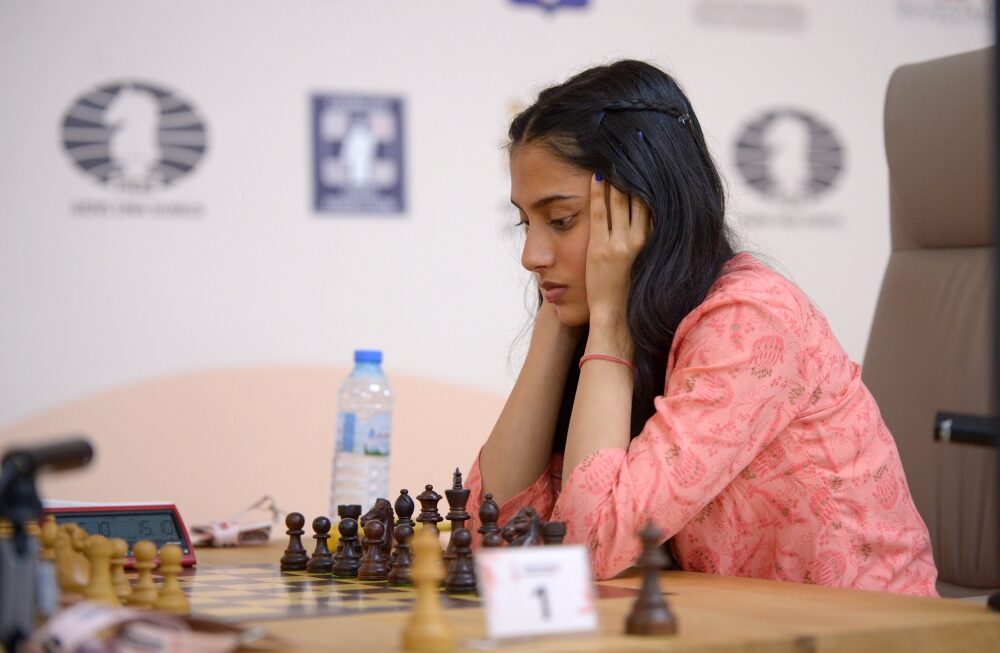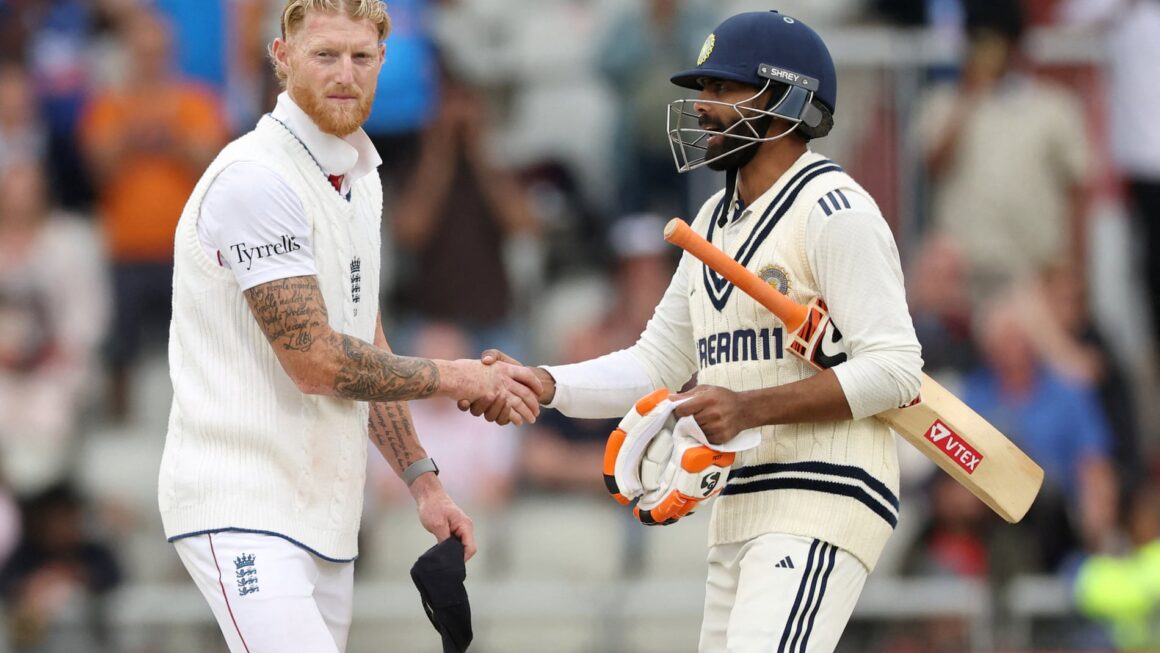Ben Stokes Handshake Controversy: Complete Analysis of ENG vs IND 4th Test Draw Incident
Ben Stokes Handshake Refusal: What Really Happened at Old Trafford
The fourth Test between England and India at Old Trafford witnessed one of the most controversial moments in recent cricket history when England captain Ben Stokes attempted to offer handshakes to Indian batters Ravindra Jadeja and Washington Sundar for a draw, only to be refused as both batters continued their pursuit of individual centuries. This incident has sparked widespread debate about sportsmanship, gamesmanship, and the unwritten rules of cricket.
We examine the complete sequence of events, the reactions from both teams, and the broader implications of this unprecedented moment in Test cricket. The controversy has not only divided cricket fans but also raised questions about captaincy decisions and match situations in the longest format of the game.
The Moment That Divided Cricket: Detailed Timeline of Events
Day 5 Drama Unfolds
The controversy erupted during the final session of Day 5 at Old Trafford, with India batting at 2/174 in their second innings. Both Ravindra Jadeja and Washington Sundar were well-positioned on their individual scores, with Sundar on 80* and Jadeja on 89*, both approaching their respective centuries.
As the match entered its final hour, the situation became increasingly tense. England needed wickets to force a victory, while India’s priority appeared to shift between saving the match and achieving personal milestones for their batters.
The Handshake Offer and Rejection
During a drinks break in the final session, England skipper Ben Stokes approached the Indian batters at the crease and extended his hand for a handshake, effectively offering to call the match a draw. This gesture, while sporting on the surface, came at a crucial moment when both Indian batters were tantalizingly close to reaching significant personal milestones.
The refusal from both Jadeja and Sundar sent shockwaves through the cricket world, with many interpreting this as prioritizing individual achievements over team objectives.
Gautam Gambhir’s Coaching Philosophy Under Scrutiny
Strategic Decision-Making in Test Cricket
Under head coach Gautam Gambhir’s guidance, the Indian team’s approach to Test cricket has evolved significantly. The decision to continue batting despite the draw offer reflects a coaching philosophy that emphasizes individual excellence alongside team goals. We analyze how this incident fits into Gambhir’s broader strategic framework for Test cricket.
Gambhir’s tenure as head coach has been marked by aggressive decision-making and a focus on developing players’ confidence in pressure situations. The Old Trafford incident perfectly encapsulates this approach, where individual milestones are viewed as building blocks for future team success.
Comparison with Previous Coaching Regimes
The controversy has inevitably led to comparisons with previous Indian coaching setups. Critics have questioned whether this approach aligns with traditional Indian cricket values, sparking debates about the balance between individual achievements and team objectives.
We examine how different coaches might have handled this situation and what it reveals about evolving cricket cultures in the modern era.
Ben Stokes’ Leadership Style and Controversial Comments
England Captain’s Reaction
Following the handshake refusal, Ben Stokes made several comments that have been criticized as unsporting and classless by cricket analysts and fans. The England captain’s reaction to the situation has raised questions about his leadership approach and understanding of cricket’s unwritten rules.
Stokes’ visible frustration during the incident was captured on television cameras, showing animated discussions with his teammates and what appeared to be taunting gestures toward the Indian batters.
Leadership Under Pressure
The incident provides insight into how different captains handle pressure situations. While Stokes’ offer could be seen as sporting, his subsequent reaction when refused has drawn criticism from cricket purists who believe in maintaining dignity regardless of the outcome.
We analyze how this moment reflects broader leadership philosophies in international cricket and the fine line between competitive spirit and unsporting behavior.
Cricket’s Unwritten Rules: Sportsmanship vs. Gamesmanship
The Handshake Tradition in Cricket
Cricket has long prided itself on traditions of sportsmanship, with mutual respect between opponents being a cornerstone of the game’s values. The handshake offer and its refusal highlight the complex dynamics between formal rules and cricket’s unwritten code of conduct.
Traditionally, handshakes in cricket signify mutual agreement to end proceedings, whether at the conclusion of play or in specific match situations. However, the timing and context of such offers can significantly impact their reception and interpretation.
Modern Cricket’s Evolving Standards
The Old Trafford incident reflects cricket’s evolution in the professional era, where individual achievements carry significant weight in player valuations and career trajectories. We examine how modern cricket’s commercial aspects influence decision-making in traditional match situations.
The debate surrounding this incident reveals generational differences in cricket philosophy, with purists favoring traditional sportsmanship while younger players and coaches prioritize measurable achievements.
Individual Milestones vs. Team Objectives: The Eternal Debate
Ravindra Jadeja’s Century Quest
Ravindra Jadeja’s pursuit of his century became a central element of the controversy, with the all-rounder eventually reaching the milestone before agreeing to the draw. This decision has sparked debates about priorities in team sports and the legitimacy of pursuing individual goals in match-saving situations.
Jadeja’s century held particular significance given his recent performances and his role as a key player in India’s Test cricket setup. The milestone represented not just personal achievement but also vindication of his batting abilities at the highest level.
Washington Sundar’s Breakthrough Moment
Similarly, Washington Sundar’s approach to his potential century reflected the mindset of a player establishing himself in international cricket. With Sundar positioned on 80* and needing just 20 runs for his maiden Test century, the decision to continue batting demonstrated the importance of seizing rare opportunities in Test cricket.
The incident highlights how individual milestones can serve broader team interests by building player confidence and reputation for future matches.
Technical Analysis: Match Situation and Strategic Implications
Time Management in Test Cricket
The controversy occurred with limited time remaining in the match, creating a complex strategic situation. We analyze the mathematical possibilities and strategic considerations that influenced both teams’ decisions during these crucial moments.
England’s handshake offer came at a time when taking wickets was becoming increasingly difficult, while India’s position allowed for both defensive and aggressive options depending on the situation’s development.
Risk Assessment and Decision Matrix
The incident provides an excellent case study in risk assessment during high-pressure Test match situations. We examine the various factors that influenced decision-making from both teams:
England’s Perspective:
- Limited time to take eight wickets
- Bowler fatigue after extended spells
- Weather conditions and light considerations
- Series implications of the draw
India’s Perspective:
- Secure position with minimal risk of losing
- Opportunity for individual milestones
- Series momentum considerations
- Player confidence and morale factors
Media Reaction and Public Opinion Analysis
Social Media Explosion
The handshake controversy generated massive engagement across social media platforms, with cricket fans, experts, and former players weighing in on the incident. We analyze the diverse range of opinions and their implications for cricket’s future.
The incident became a trending topic within hours, generating thousands of comments, memes, and analytical posts that reflected the deep divisions in cricket philosophy among fans worldwide.
Expert Commentary and Analysis
Cricket experts and former players provided varied perspectives on the incident, ranging from support for the Indian batters’ decision to criticism of both teams’ approaches. These expert opinions help frame the incident within broader cricket contexts and historical precedents.
The diversity of expert opinions reflects the complexity of the situation and the absence of clear precedents for similar scenarios in Test cricket history.
Historical Precedents: Similar Incidents in Cricket History
Comparable Controversies
Cricket history provides several instances of controversial decisions regarding sportsmanship and individual achievements. We examine similar incidents and their resolutions to provide context for the Old Trafford controversy.
Previous incidents involving handshake offers, match declarations, and individual milestone pursuits offer valuable insights into how cricket’s values have evolved over different eras.
Lessons from Past Controversies
Historical analysis reveals patterns in how cricket controversies develop and resolve, providing frameworks for understanding the current incident’s long-term implications for the sport.
Impact on England vs India Series Dynamics
Series Momentum and Psychological Factors
The handshake controversy’s impact extends beyond the immediate match, influencing the psychological dynamics between the two teams for the remainder of the series. We analyze how such incidents affect team morale and strategic approaches in subsequent matches.
The incident has added an extra layer of intensity to the series, with both teams likely to carry the emotional residue of this controversy into future encounters.
Fan Engagement and Series Interest
Controversies often increase fan engagement and media attention, potentially benefiting the sport’s commercial interests while simultaneously challenging its traditional values. We examine this paradox in the context of modern cricket’s commercial landscape.
Broader Implications for International Cricket
Setting Precedents for Future Matches
The Old Trafford incident will likely influence how similar situations are handled in future Test matches, creating informal precedents for player behavior and captain decision-making in comparable scenarios.
Cricket’s governing bodies may need to consider whether additional guidance is required for such situations, balancing traditional sportsmanship with modern cricket’s competitive realities.
Evolution of Cricket Culture
The controversy reflects broader changes in cricket culture, where individual achievements are increasingly valued alongside team success. This evolution challenges traditional notions of cricket as purely a team sport.
Conclusion: Redefining Sportsmanship in Modern Cricket
The Ben Stokes handshake controversy at Old Trafford represents a defining moment in contemporary cricket, highlighting the tension between traditional sportsmanship and modern competitive priorities. The incident has exposed fundamental questions about cricket’s values and the balance between individual achievement and team objectives.
As cricket continues to evolve in the professional era, such controversies will likely become more frequent, requiring the cricket community to reassess its approach to sportsmanship and competitive behavior. The Old Trafford incident serves as a catalyst for these important discussions about cricket’s future direction.
The involvement of figures like Gautam Gambhir and Ben Stokes, both respected for their competitive spirit, adds weight to the debate and ensures that its implications will influence cricket discourse for years to come. Ultimately, the controversy may contribute to a more nuanced understanding of sportsmanship that accommodates both traditional values and modern cricket’s competitive realities.













